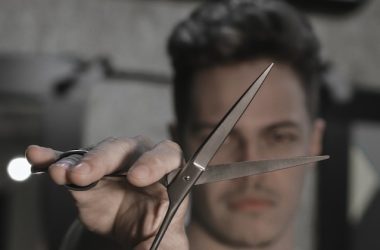This is an evolving document, largely based on the Guardian, BBC and NYT style guides. We will add to this as required.
Points to note
- Where using Gen AI tools, ensure appropriate crediting. See section on AI usage and crediting below
- Do not change layout of template (eg: don’t change to double column, instead of the current single)
- Headlines must NOT be all-caps
- Use single quote marks in headlines (not double)
- If your bio does not have a photograph, your byline cannot be published.
- No sub-headlines. Our style is NO sub-headlines. You may use sections or separators for longer stories, instead.
a or an before H?
- Use an before a silent H: an heir, an hour, an honest politician, an honorary consul;
- Use a before an aspirated H: a hero, a hotel, a historian (but don’t change a direct quote if the speaker says, for example, “an historic”).
- With abbreviations, be guided by pronunciation: eg an LSE student
abbreviations and acronyms
Do not use full points (full stops) in abbreviations, or spaces between initials, including those in proper names: IMF (not I.M.F.), mph, eg (not e.g. or eg.), 4am, M&S, No 10, AN Wilson, WH Smith, etc. If an abbreviation or acronym is to be used more than once in a piece, put it in brackets at first mention: so Association of Chief Police Officers (ACPO).
Cap up single letters in such expressions as C-list, F-word, “the word assassin contains four Ss”, etc
Africa (and Asia, and Europe).
Is a continent made up of more than 50 countries. When writing about people from those countries be sure to locate them precisely in their town, city, country etc. Avoid simply saying they are African or from Africa. Ditto, Asia, Europe etc.
ages
Kamala Harris, 56 (not “aged 56”); Freddie Bawden Marsh, nine.
a 62-year-old man; a 62-year-old; 62 years old.
ai usage and crediting
all content produced for the Breaker and associated channels with help from AI must clearly acknowledge that.
acknowledgment should state which AI tool(s) were used, for what specific purposes. this applies to written articles, audio content, and video productions.
for written articles: include an italicised footnote at the end.
for audio content: include the acknowledgment in the show notes or episode description.
for video content: include the acknowledgment in the video description on the platform where it’s hosted (e.g. YouTube).
the acknowledgment should follow this format:
AI tools were used to produce this [article/podcast/video] for [specific purposes]. [Tool name(s)] [was/were] used for [purpose(s)].
for instance:
single use case: AI tools were used in the production of this article for idea generation. ChatGPT assisted in brainstorming potential story angles. The journalist confirms that all AI outputs were critically evaluated, refined, and fact-checked to ensure accuracy and relevance.
multiple use case: AI tools were used in the production of this video for idea generation and visual suggestions. Microsoft Copilot was used to brainstorm potential story angles, and to generate visual concepts. The journalist confirms that all AI outputs were critically evaluated, refined, and fact-checked to ensure accuracy and relevance.
multiple tools for different purposes: AI tools were used in the production of this podcast for interview preparation and transcript generation. ChatGPT was used to draft initial interview questions, and Otter.ai was used to generate a preliminary transcript. The journalist confirms that all AI-generated content was evaluated, edited, and supplemented with additional research and professional judgement.
note: the use of AI should be limited to enhancing journalistic processes and should never replace critical thinking, fact-checking, or original reporting by the journalist. The specific AI tools mentioned above are only examples; always, always, always specify the actual tools used in your work, and how.
apostrophes
are used to indicate a missing letter or letters (can’t, we’d) or a possessive (David’s book).
don’t let anyone tell you that apostrophes don’t matter and we would be better off without them. consider these four phrases, each of which means something different:
my sister’s friend’s books (refers to one sister and her friend).
my sister’s friends’ books (one sister with lots of friends).
my sisters’ friend’s books (more than one sister, and their friend).
my sisters’ friends’ books (more than one sister, and their friends).
the possessive in words and names ending in S normally takes an apostrophe followed by a second S (Jones’s, James’s).
plural nouns that do not end in S take an apostrophe and S in the possessive: children’s games, old folk’s home, people’s republic, etc.
phrases such as butcher’s knife, collector’s item, cow’s milk, goat’s cheese, pig’s blood, hangman’s noose, writer’s cramp, etc are treated as singular.
use apostrophes in phrases such as two days’ time, 12 years’ imprisonment and six weeks’ holiday, where the time period (two days) modifies a noun (time), but not in nine months pregnant or three weeks old, where the time period is adverbial (modifying an adjective such as pregnant or old) – if in doubt, test with a singular such as one day’s time, one month pregnant.
proper names that contain an apostrophe stay the same in the possessive: McDonald’s burgers may be delicious but Sainsbury’s are just as good.
some shops use an apostrophe, wrongly, to indicate a plural (“pea’s”), but will generally omit the apostrophe when one is actually required (“new seasons asparagus”), a phenomenon sometimes referred to as the greengrocer’s (or grocer’s) apostrophe. Avoid.
capitals
- jobs all lower case, eg prime minister, US secretary of state, chief rabbi, editor of the Breaker.
- titles cap up titles, but not job description, eg Prime Minister Boris Johnson (but the UK prime minister); the Duke of Westminster (the duke at second mention); Pope Francis but the pope.
- government departments in English-speaking countries Initial capitals when full name is used, eg Home Office, Foreign Office, Ministry of Justice (UK), Department of Defense, Department of Homeland Security (US). Lowercase when abbreviated or paraphrased, eg justice ministry, defense department, Australia’s immigration department
- acts of parliament initial caps (but bills lc), eg Official Secrets Act, Child Poverty Act 2010
- universities and colleges of further and higher education caps for institution, lc for departments, eg Bournemouth University department of communication and journalism; Oregon State University, Free University of Berlin, University of Queensland school of journalism, London College of Communication.
captions and credits
captions are an opportunity to give readers further information, rather than insulting their intelligence by stating the obvious.
- A photograph illustrating an election in Bournemouth, say, may show a woman pushing a pram past a hoarding covered with candidates’ posters. The caption that tells us: ‘A woman pushes a pram past a hoarding covered with election posters in Winton’ is not particularly illuminating. Instead, write off the picture; provide additional information. For instance, ‘Polls indicate that women’s votes will be a deciding factor in the BCP election.’
- This is particularly important when captioning illustrative images (to be used sparingly). In such cases, ensure you use information from the story to link the (illustrative) image to the focus of the story.
- Photo credits must follow the caption. Thus: Polls indicate that women’s votes will be a deciding factor in the BCP election. Photo: Natasha Salloum. Or Photo courtesy: Natasha Salloum (if it has been supplied by her).
- Points to note: It should be ‘Photo’, not ‘Photo by’ or ‘Image credits’ or some other phrase. It should have the full name of the photographer. Full point at the end of caption, but no full point after name of photographer. Photo: Unknown is not acceptable crediting.
fractions
- two-thirds, five-eighths, etc, but two and a half, three and three-quarters, etc.
- however, use 1⁄3, 3⁄4 in tables, recipes, etc.
- do not mix fractions and percentages close together
the Breaker
The Breaker (if beginning a sentence), otherwise refer to as the Breaker or Breaker (depending on construction). For instance:
- Breaker journalist James Kay interviews award-winning author Dingdong Sunmati
- This is how you should write a good headline for the Breaker
headlines
Headlines should be written out in Sentence Case style. That is, write titles as if they were a typical sentence. In this case, the first word of the headline would be capitalised while the rest of the title would be in lower case, except for proper nouns. Below are a few examples of Sentence Case style headlines:
- This is how to write a good headline
- A review of a hike around Swanage
- The shenanigans of Michael Sunderland (certainly not THE SHENANIGANS OF MICHAEL SUNDERLAND)
Use active verbs where possible, particularly in news headlines: “Editor updates style guidelines” is much better than “Style guidelines updated”.
Avoid exclamation marks – look, I’ve written something funny! – in headlines where possible.
Question marks are to be used sparingly, as are quotation marks (but do use to signify a quote or for legal reasons).
honorifics and earned titles
Use just surname after first mention (no Mr, Mrs, Ms, unless it is for Multimedia Reporting Skills — in which cases, please use honorifics as per guidance provided in class) So:
- Dorcas Abiade at first mention, subsequently Abiade
- Rishi Sunak at first mention, subsequently Sunak
But in the case of earned titles (Prof, Dr, Sir, Lady etc), use the title at first mention, thereafter just the surname. So:
- Sir Richard Branson at first mention, thereafter Branson;
- Prof Einar Thorsen at first mention; thereafter Thorsen
- Dr Antje Gluck at first mention, thereafter Gluck
As always, use common sense: in a story where two people have the same name (eg a court case about a husband and wife or brothers), it may be necessary to use Mr and Mrs or Ms, or forenames.
Under-18s should normally be referred to by their first names
numbers
spell out from one to nine; numerals from 10 to 999,999; thereafter use m, bn or tn for sums of money, quantities or inanimate objects in copy, eg 5m tonnes of coal, 30bn doses of vaccine, £50tn;
but million or billion for people or animals, eg 1 million people, 25 million rabbits, the world population is 7 billion, etc;
in headlines always use m, bn or tn.
in headlines, you do not need to spell out one to nine. You can use numerals. So: 8 major mistakes students make, etc
percentages
Spell it out in body copy: 65 per cent (not 65%). In headlines, use % (not per cent)
quotes (and attribution)
double quotes at the start and end of speech. As in: “I really love Chindu’s workshops,” he said.
single quotes for quoted words within a quoted section. Place full points and commas inside the quotes for a complete quoted sentence; otherwise the point comes outside. As in:
- “Chindu said: ‘You really need to pay attention to details,’ and I said: ‘I agree.’” But: “Chindu said we really need to ‘pay attention to details’.”
when beginning a quote with a sentence fragment that is followed by a full sentence, punctuate according to the final part of the quote. As in: The lecturer he loved “teaching Digital Journalism. But that is only to be expected.”
In Multimedia Reporting Skills, and for news stories, introduce quotes with a colon. So:
Chindu said: “I have a headache.” Not Chindu said, “I have a headache.” In other words, attribute first, followed by the quote.
In Digital Journalism, and for feature stories, delay the attribution. Quote first, then attribute. Thus:
“I have a headache,” Chindu said.
If it is a longer quote, you can also attribute midway (or early in the quote where there’s a natural break). As below:
“I have a really bad headache,” Chindu said. “But I will not cancel my session. Oh, no. I will still give them hell.”
in case you haven’t noticed where full points and the comma should come, it should be inside the closing quote marks for a complete quoted sentence. As in:
Chindu said: “Writing a style guide is a pain in the neck.” (Not “…neck”.)
“Writing a style guide is a pain in the neck,” Chindu said. (Not “…pain in the neck”, Chindu said.)
single quotes (not double quotes)
in headlines (but sparingly), standfirsts, and captions.
swearwords (MUST check with CS, AB, MM before publishing)
avoid — use sparingly, only with an excellent reason. Follow the Guardian’s guidelines:
- first, remember the reader, and respect demands that we should not casually use words that are likely to offend.
- second, use such words only when absolutely necessary to the facts of a piece, or to portray a character in an article; there is almost never a case in which we need to use a swearword outside direct quotes. The use of swearwords in furniture, especially headlines, should also be avoided unless an editor deems it absolutely necessary.
- third, the stronger the swearword, the harder we ought to think about using it.
- finally, never use asterisks, or such silliness as b——, which are just a cop-out, as Charlotte Brontë recognised: “The practice of hinting by single letters those expletives with which profane and violent people are wont to garnish their discourse, strikes me as a proceeding which, however well meant, is weak and futile. I cannot tell what good it does – what feeling it spares – what horror it conceals”








